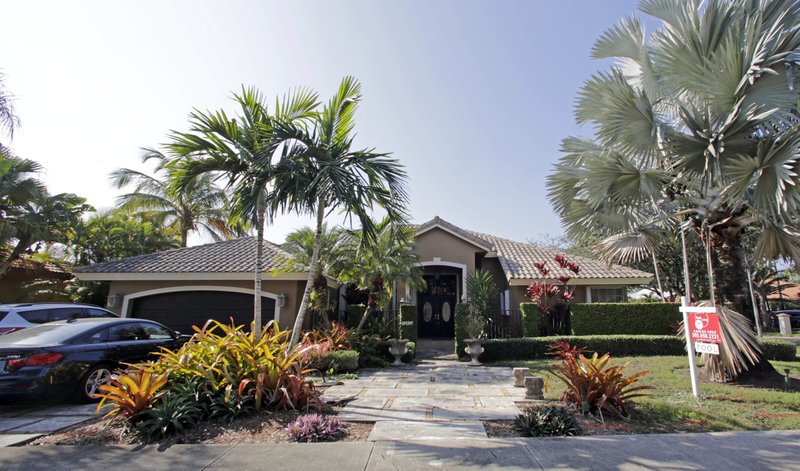WASHINGTON -- U.S. home prices rose again in October as buyers bidding for scarce properties drove prices higher.
The Standard & Poor's CoreLogic Case-Shiller 20-city home price index, released Tuesday, rose 5.1 percent in October from a year earlier after climbing 5 percent in September. Prices for the 20 cities are still 7.1 percent below their July 2006 peak.
The broader Case-Shiller national home price index was up 5.6 percent in October and has fully recovered from the financial crisis.
"Home prices and the economy are both enjoying robust numbers," David Blitzer, chairman of the S&P index committee, said in a statement. "However, mortgage interest rates rose in November and are expected to rise further as home prices continue to outpace gains in wages and personal income.
Prices rose 10.7 percent annually in Seattle, 10.3 percent in Portland and 8.3 percent in Denver. New York registered the smallest year-over-year gain: 1.7 percent. All 20 cities in the index showed a year-over-year gain.
Home sales and prices have been helped by healthy demand, tight supplies and low mortgage rates. Lean housing inventory has continued to put upward pressure on home values at the same time steady hiring has lifted demand, resulting in two years of steady gains in property prices of around 5 percent.
Home sales in Arkansas rose less than 1 percent in October compared with sales a year earlier, the Arkansas Realtors Association said earlier this month. The average sale price rose less than 1 percent to $171,008.
The National Association of Realtors said last week that fewer than 1.9 million homes were for sale on the U.S. market in November, down 9 percent from a year earlier. The tight supply pushed the median price of existing homes to $234,900 last month, up 6.8 percent from a year ago.
But the cheap loans may be vanishing. The rate on the benchmark 30-year, fixed-rate mortgage last week reached 4.30 percent, the highest since April 2014.
Mortgage rates' steady upward march reflects the surge in long-term bond yields. The yield on the 10-year U.S. Treasury peaked at 2.6 percent last week before retreating slightly. The movement of the 10-year bond is one of the best indicators of whether mortgage rates will rise or fall. When yields go up, home loan rates tend to also go up.
Rates have surged since the Nov. 8 election of Donald Trump. Investors have bid rates higher because they believe the president-elect's plans for tax cuts and higher infrastructure spending will drive up economic growth and inflation.
And the Federal Reserve, citing improvement in the U.S. economy, this month raised short-term U.S. interest rates for only the second time in a decade.
"With many traders off for the Christmas holiday, we aren't seeing much movement in Treasury yields" and mortgage rates were stable last week, said Michael Becker, branch manager of Sierra Pacific Mortgage in White Marsh, Md. "With the combination of the holiday and a lack of economic data ... mortgage rates will be flat [this] week."
Information for this article was contributed by Paul Wiseman of The Associated Press, Michelle Jamrisko of Bloomberg News and Kathy Orton of The Washington Post.
Business on 12/28/2016
